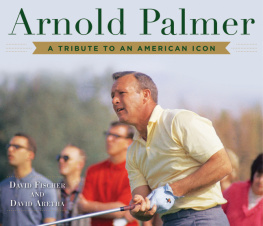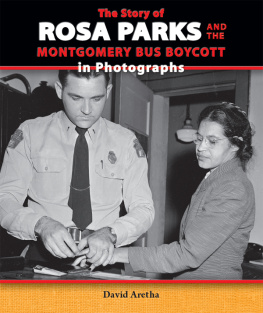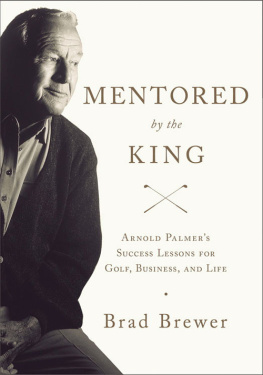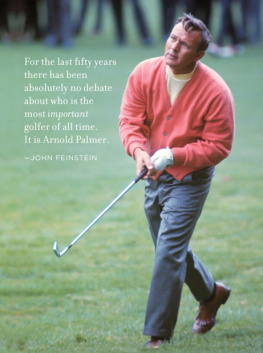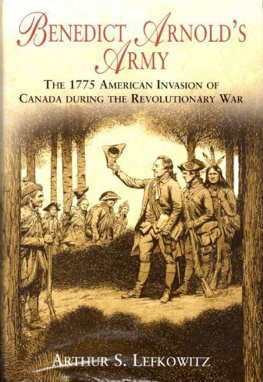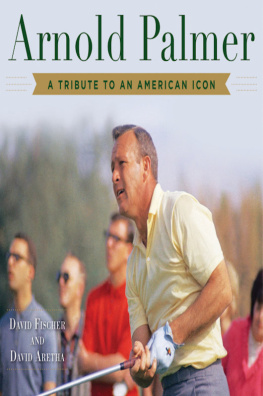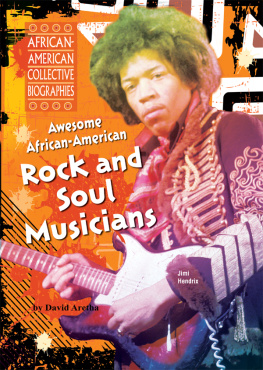Copyright 2017 by David Fischer and David Aretha
All rights reserved. No part of this book may be reproduced in any manner without the express written consent of the publisher, except in the case of brief excerpts in critical reviews or articles. All inquiries should be addressed to Skyhorse Publishing, 307 West 36th Street, 11th Floor, New York, NY 10018.
Skyhorse Publishing books may be purchased in bulk at special discounts for sales promotion, corporate gifts, fund-raising, or educational purposes. Special editions can also be created to specifications. For details, contact the Special Sales Department, Skyhorse Publishing, 307 West 36th Street, 11th Floor, New York, NY 10018 or .
Skyhorse and Skyhorse Publishing are registered trademarks of Skyhorse Publishing, Inc., a Delaware corporation.
Visit our website at www.skyhorsepublishing.com.
10 9 8 7 6 5 4 3 2 1
Library of Congress Cataloging-in-Publication Data is available on file.
Cover design by Tom Lau
Cover photos: AP Images
Print ISBN: 978-1-5107-2485-3
Ebook ISBN: 978-1-5107-2486-0
Printed in China
To Arnie (of course!).
Thank you for the thrills and inspiration, for your kindness and generosity.
Golf is a better game, and the world a better place, because of you.
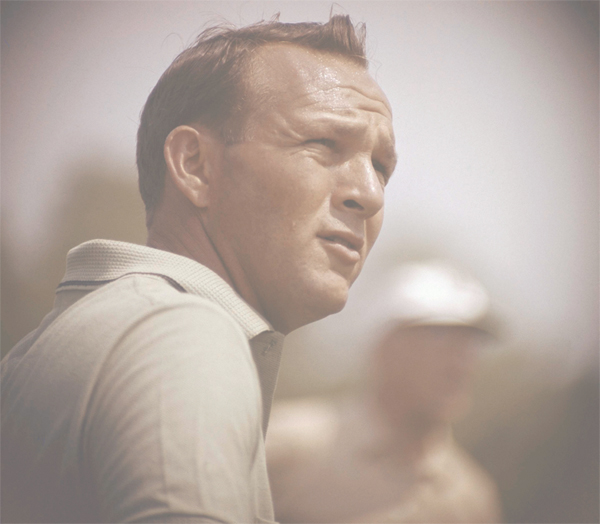
AP Photo
CONTENTS
PREFACE
THE EVERYDAY MANS HERO
M ost of us remember Arnold Palmer as a kindly gentleman, the uncle or grandpa we wished we had. Though he moved slowly in older age, he warmed our hearts with his sunset smile and small-town charm. Perhaps we recall a hunched Arnie traversing Hogan Bridge at Augusta National at his 50th Masters, waving his visor one last time. Or wearing Sansabelt slacks and a yellow golf shirt at Latrobe in an 80s Pennzoil commercial, saying, You know, this old tractor and I are a lot alike. Or, if were old enough to remember the 70s, we might recall him clutching an iron to his midsection and mouthing an owww while his approach shot hooks into the trees.
But long before he became lovable ol Arnie, Palmer took the golf world by storm with a youthful exuberancea controlled recklessness. Slender and schoolboy handsome with powerful arms, smiling confidently and effusing energy, Arnold drove the green, went for broke, and charged down the stretch of major tournaments, captivating galleries along the way. Sam Snead said that every time Palmer drove the ball, it looked like he was trying to hole his tee shot. He wasnt far off the mark, Arnie replied. Instead of chipping out of the woods after a drive gone awry, he found a clearing in the trees and blasted toward the green. Sometimes he failed; sometimes he made it. Either way, Arnies Army applauded the effort. Arnold Palmer, Jack Nicklaus said, was the everyday mans hero.
Palmer was not a young phenom like Tiger Woods or an age-defier like Snead or Nicklaus. He won 44 PGA Tour events in his 30s (195969), the most by any player in history. And though many of us remember him as old Uncle Arnie who struggled in the 70s and beyond, a competitive fire burned within him long after his glory days were over.
Case in point: the 1980 Masters. Palmer hadnt won on Tour in seven years, and he had failed to break 70 at Augusta in his last 18 rounds there. But for Sundays round, he was paired with Nicklaus, his friendly, fierce, and much younger rival of 20 years. Arnie plays better when hes got something like this to light his fire, said his wife, Winnie. Or, as Palmer said when he learned of the Sunday pairing, Ill whip his ass. Arnie, age 50, went out and shot a 69 to Jacks 73.

Arnold Palmer obliges his ever-present army with autographs before the opening round of the U.S. Open at Pebble Beach, California, on June 16, 1982. (AP Photo/Jim Palmer)
While most sports stars are revered from afar, Palmer engaged with the fans in a warm, personable, respectful manner.
As Raymond Floyd said, Palmer set the standard for how superstars in every sport ought to be, in the way he has always signed autographs, in the way he has always made time for everyone. On the golf course, all I ever saw was a mass of people. He was able to focus in on everyone in the gallery individually. It wasnt fake.
And man, could he play the game.
Though they called him The King, Arnold remained forever humble. When he returned to the links after recovering from prostate cancer, he downplayed the comeback. Im not interested in being a hero, he said. I just want to play some golf.
If youre an older reader, we hope this book rekindles memories of Arnies magical moments.
If youre a younger reader, be prepared to be inspired.
INTRODUCTION
GOING FOR BROKE
F ull of vigor and self-assurance, Arnold Palmer stepped to the par-4 1st hole of Cherry Hills Country Club and attempted to drive the green. It was the first round of the 1960 U.S. Open, and the young-at-heart basher felt he could blast onto the putting surface of the 346-yard hole. Sure, balls travel farther in the high altitude of Englewood, Colorado, but perhaps the thin air also affected his brain.
Palmer swung out of his shoes and didnt come close to the green. Instead, the ball sliced into the trees on the right and fell into a fast-running stream. Arnold looked over at USGA Executive Director Joe Dey. Joe, Arnold quipped, I think Ill just let that run on down to the green. Dey scrunched up his face and replied, Now Arnold, you know better than that. Instead, Palmer retrieved the ball from the ditch, dropped it, and made a double-bogey 6. His attempt to go for broke on Cherry Hills No. 1 had been a terrible mistake.
Back in 1960, the U.S. Open was indeed played on Fathers Day weekend, but not on Fathers Day. Round 1 took place on Thursday, Round 2 was held on Friday, and the final two roundsa grueling 36 holeswere staged on Saturday. Prior to the morning and afternoon rounds on Saturday, players ate cheeseburgers (apparently the best source of energy at the time), drank iced teas, and chatted with colleagues and reporters.
Well, that burned me up. I was so hot that I couldnt finish my hamburger.
Arnold Palmer prior to the final round of the 1960 U.S. Open, after being told by Bob Drum that he couldnt win even if he finished with a 65
During that mid-round break, not many golf writers wanted to talk to Palmer. He was too far back. Despite winning five PGA Tour events already in 1960, including the Mastersand despite 20 Tour victories since debuting in 1954Palmer sat at 15th on the leader board, seven strokes back, entering the final round. Instead, much of the buzz centered on leader Mike Souchak, a rugged former Duke University placekicker who held the lead at five-under.
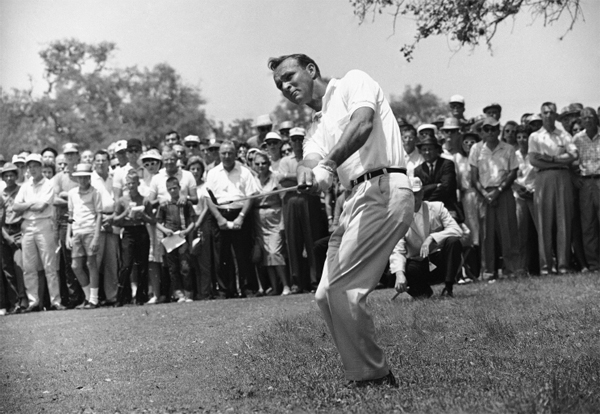
Palmer lifts an iron shot during a 1962 event. Everybody talks about how he had this unorthodox swing, but it was only the finish that was unorthodox, said instructor Hank Haney. He was so solid through the ball. (AP Images/Ted Powers)
But in that clubhouse, and across America as sports fans tuned in on television, most of the focus centered on an aging legend and an up-and-coming superstar. Paired together for the final round, Ben Hogan and Jack Nicklaus stood at three-under. Hogan, the 47-year-old Iceman, had won a record-tying four U.S. Opens, including three after a near-fatal car crash in 1949 that wreaked havoc on his legs. A scholar of the game and a perfect ball-striker, Hogan now struggled only with his puttingand perhaps his stamina. Commentators suggested that his ravaged legs wouldnt carry him through 36 holes on Saturday.

